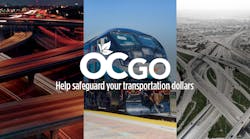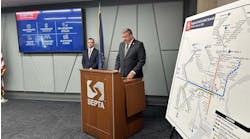OCTA returns nearly $12 million in locally generated sales tax dollars to improve local streets
The Orange County Transportation Authority (OCTA) has returned nearly $12 million in locally generated sales tax dollars to cities around Orange County to improve local streets, including repairing potholes, repaving streets, synchronizing signals, enhancing safety and supporting local transit solutions.
The funds come from Measure M, the half-cent sales tax for transportation improvements renewed by Orange County voters in 2006. Measure M, also known as OC Go, includes flexible funding through the Local Fair Share Program to help cities and the County of Orange augment the cost of maintaining, rehabilitating and enhancing the local street network.
The Local Fair Share funding is distributed every two months, and OCTA has allocated $623.32 million for street improvements since the inception of this program in 2011. Funds are distributed using a formula based on each jurisdiction’s population, sales tax generated, and number of street miles.
“This program epitomizes the concept of putting local tax dollars to work,” said OCTA Chairman Gene Hernandez, also the Mayor of Yorba Linda. “Every two months, these locally generated dollars go back to the cities and the county as a stable and flexible source of funding for vital transportation projects.”
Key among local transportation needs is pavement preservation, which involves extending the useful life of pavement and avoiding costly street reconstruction. The cost of street rehabilitation has increased substantially in recent years and gas tax revenues have not kept pace, which has a direct impact on cities’ ability to fund street maintenance and rehabilitation. However, Measure M revenues have kept pace with inflation. Preserving and maintaining streets in good condition is a crucial goal of the Measure M Local Fair Share Program.
Orange County streets are among the best in the state with an average weighted pavement condition index score of 79 compared to the statewide average of 66.
Investing in local streets saves future public costs, saves drivers money on wear and tear costs, keeps traffic moving and provides for expanded travel choices.


